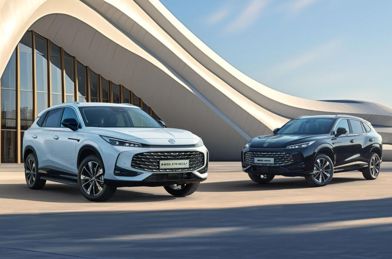Wireless electric vehicle (EV) charging pads under motorways could be a more cost-effective solution than multiple fixed charging stations, as New Zealand's fleet of plug-in vehicles grows - but only over a certain speed (of charging, not driving!).
That's according to a study by the University of Auckland on a section of Auckland motorway, looking at economic impact, charging lane length, traffic flow and energy consumption. It has been published in an international journal, Sustainable Cities and Societies.
Engineering PhD candidate Ramesh Majhi, Faculty of Engineering senior lecturer Dr Prakash Ranjitkar and Dr Selena Sheng developed traffic simulations and a "state of charge" model to investigate the impact of dynamic wireless charging (DWC) pads on a 90km section of SH1. The study included four different charge rates - 50, 75, 100 and 125kW - and real traffic data covering both peak and free-flow rates.
Those charge rates are entirely appropriate to what Kiwi battery electric vehicle (BEV) users currently have available at public stations. The mainstream and most common DC rate is 50kW, but faster machines are now appearing, with 100kW, 150kW - and even up to 300kW on the latest Hyper Chargers.
DWC pads work in similar way to wireless charging for mobile phones: electromagnetic induction is used to replenish the battery as the vehicle passes over. The technology is also ideal for parking spaces.
The team looked at the cost of DWC over the 90km of road, compared to a network of fixed DC stations within 1km of the motorway.
The cost of DWC drops the heavier the traffic, says lead author Majhi: "The total investment cost of a DWC facility in the corridor for a system with a 50kW inductive power transfer capacity is $1.59 million per year when traffic flows freely, compared to $1.42m per year in the case of peak hour traffic."
That's because more charging length is required to get the same result when a car is travelling more quickly.
The study suggests that without taking into account the time required to travel to a fixed station and wait while the vehicle charges, DWC only becomes less costly at 125kW and above. However, it also says it's "imperative" to consider the value of the time involved in fixed stations, especially as the EV population increases. Stations can also only handle a limited number of vehicles at a time (which means more waiting), whereas DWC is constantly available to any vehicle on the road.
With all that considered, the study says "at a higher inductive power transfer capacity, such as 75kW and above, the wireless in-road charging facility becomes less costly compared to the typical plug-in set-up under peak-hour conditions while taking the cost of travel into account.
"Moreover, with advanced research in dynamic wireless charging system components, the construction costs of a wireless charging lane will eventually decrease, making it more feasible than existing plug-in charging."
It all sounds promising, but of course it all also depends on being able to establish the correct infrastructure and EVs having the ability to charge wirelessly. Carmakers are working on it, but the technology hasn't reached production yet.





